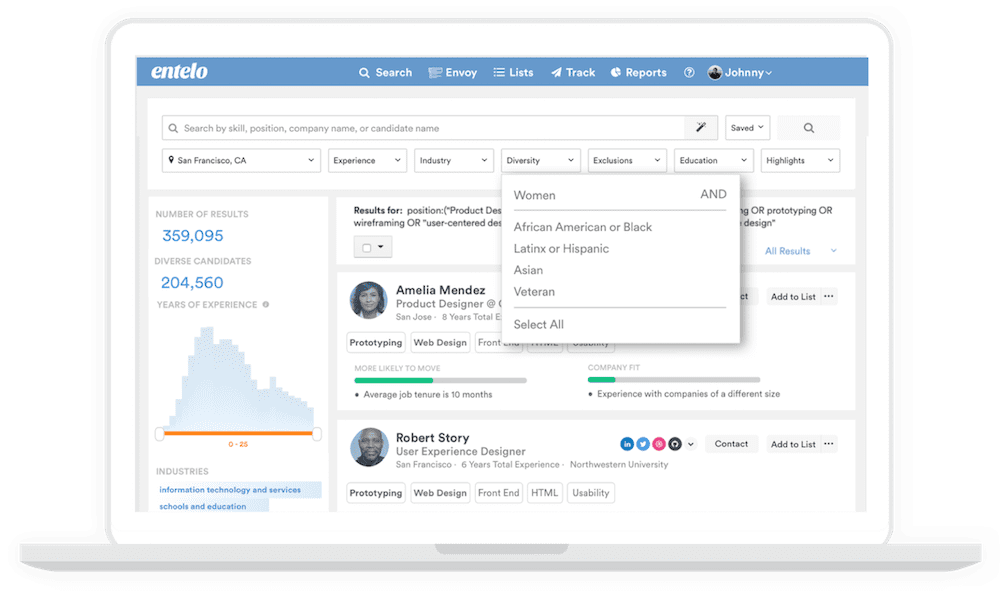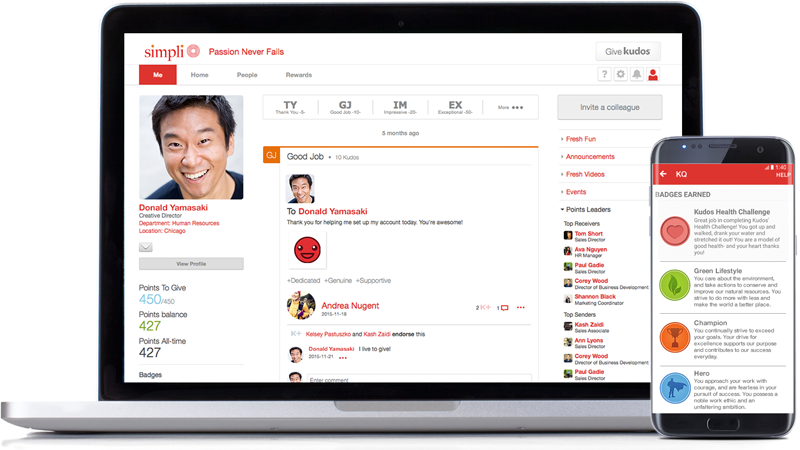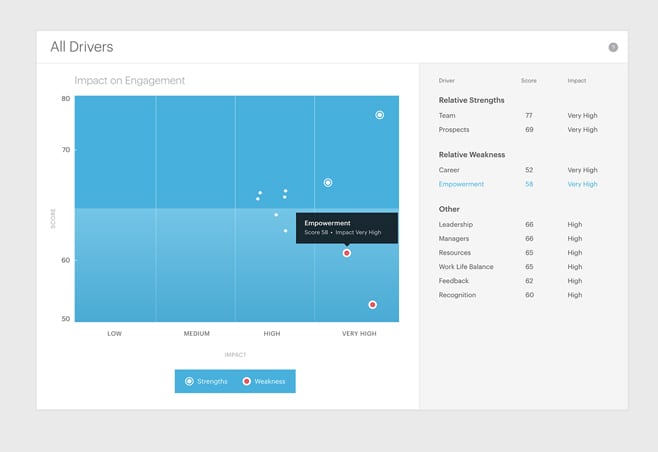A very human problem requires help from non-human solutions.

It's no secret that diversity and inclusion (D&I) is on the mind these days. In fact, it's more than just on the mind. According to a 2017 survey by PwC, 87% of business leaders say D&I is a stated value or priority for their organization.
But it's one thing to say you're going to be more diverse and inclusive as a business, and another thing to actually do it—as HR departments are learning the hard way.
From recruiting, to promotions, to rewards and recognition, becoming a diverse and inclusive organization in a legal but substantive way requires a complete overhaul of how you hire and manage talent.
It's a tall task, which is why D&I initiatives need support from the right HR technology to come to fruition, according to research by Gartner (full research available to Gartner clients):
D&I realization requires top-down action across all stages of people-related decisions to establish data-driven decision-making ... Organizations will find it hard, if not impossible, to execute D&I interventions of this breadth without technology support.
I can already hear you, reader. What does this HR technology look like? What does it actually do to improve D&I?
Let's break down three different—but significant—obstacles to your D&I initiative, and three ways HR technology can help you overcome them.
3 ways HR tech enriches your workplace diversity and inclusion efforts
1. Job distribution and candidate sourcing tools cast a wider talent net
The obstacle
If the definition of insanity is doing the same thing over and over and expecting different results, then diversity recruiting efforts should be considered complete and utter madness. How do you expect to have a more diverse pool of job candidates to draw from if you post job openings to the same job boards and look for talent in the same places?
Diverse candidate sourcing begets diverse employees, plain and simple. Companies eager to improve on D&I need to broaden their horizons to not only find niche talent pockets, but also top-tier passive candidates that aren't even actively looking for a new job.
The HR technology solution
Recruiters don't have time to manually post openings to a bunch of niche job boards, let alone measure the efficacy of each job board related to D&I efforts. Luckily, data-driven job distribution tools can solve both of these problems with ease.
Sold standalone or as part of a more comprehensive applicant tracking system (ATS), data-driven job distribution tools can automatically broadcast job openings to a wide variety of job boards and social networks beyond your usual suspects like Indeed or LinkedIn. (Some of these job boards, like Jopwell, are tailor-made to connect companies with diverse talent.)
As candidates apply from these various sources and volunteer information about their gender, ethnicity, or otherwise, these tools can aggregate this data to tell you which recruiting sources are actually aiding in your D&I efforts, and which ones are exacerbating the problem.

Distributing job postings on diversity job boards in SmartRecruiters (Source)
AI-enabled candidate sourcing tools take this search a step further by proactively scouring the web for diamonds in the rough—even those who aren't actively applying to jobs.
Just input what you're looking for, and these sourcing tools will automatically pull data from publicly available sources to create profiles of candidates that fit the criteria. You can then reach out to these candidates to see if they'd be interested in a career change.

Diverse candidate sourcing in Entelo Diversity (Source)
Using data-driven job distribution and AI-enabled candidate sourcing tools in tandem can help expand the scope of your D&I recruiting efforts considerably without the need to add recruiting headcount.
Find a job distribution or candidate sourcing tool that fits your needs
2. Rewards and recognition systems promote visibility of your entire workforce
The obstacle
In an ideal world, rewards and recognition would be doled out to workers based solely on their performance every single time. But research reveals that doesn't always happen.
For example, when HR software vendor Namely looked at client data, they found that men and women tend to praise colleagues of their own gender more frequently. And a 2017 study found evidence that race and gender affect performance review outcomes.
The result of these biases, intentional or not, is a vicious cycle where managers recognize and promote the workers that are like them—stifling inclusion efforts.
The HR technology solution
Instead of being confined to one-off meetings or unread emails, rewards and recognition software systems give employees the means to broadcast praise for the entire company to see through a Facebook-esque feed. Every time an employee is praised, they earn points, which can be redeemed for rewards like gift cards or fun outings.
Meanwhile, company leaders have access to all this praise data, which they can factor into their employee performance reviews.
Not only do these systems present the opportunity for rewards and recognition to be doled out more frequently outside of annual performance reviews, but they also democratize that power by giving everyone in the company the power to praise unsung work for all to see—not just management.
They also have a more direct effect on D&I by giving workers a medium to call out and reward leadership behavior that promotes it, letting executives know who is actually walking the walk when it comes to their D&I priorities.
Find a rewards and recognition system your workers will love
3. Voice of the employee (VoE) platforms tell you the real D&I story
The obstacle
How are you really doing on the D&I front? You can point to things like hiring metrics and the makeup of your executive board all day, but these data points fail to capture employee sentiment of your D&I efforts.
But getting workers to talk about how they really feel about your D&I efforts can be difficult, especially for those who you're failing. In a 2017 report, 40% of black employees said it is never acceptable at their company to speak about experiences of racial bias.
That makes common feedback mechanisms like surveys relatively useless on their own, meaning companies have to dig deeper to get the real story on their D&I efforts.
The HR technology solution
Borrowed from the world of customer service, voice of the employee (VoE) is an emerging concept that describes the capture, storage, and analysis of not only direct employee feedback, but also indirect and inferred employee feedback.
VoE platforms enable this by integrating with other company systems. If workers are complaining to one another about your lack of D&I on the company's collaboration software, VoE platforms will capture it. Same thing if there's an uptick in searches for “discrimination policy" on the company intranet.
Combined with frequent surveys, VoE platforms give HR leaders a more comprehensive view of employee sentiment regarding their D&I efforts, letting them know if they've really made progress, or are still lagging behind.
Shop and compare leading VoE platforms
You shouldn't DIY with D&I
Companies such as Microsoft, Facebook, and Johnson & Johnson aren't tying executive bonuses to diversity goals to make headlines. OK, they're not doing it only to make headlines.
These businesses know that improved D&I will lead to real results for their bottom line, and they know if they don't make the effort, job seekers will turn their attention to someone who does.
With help from the right HR technology, you can make real strides with D&I too.

